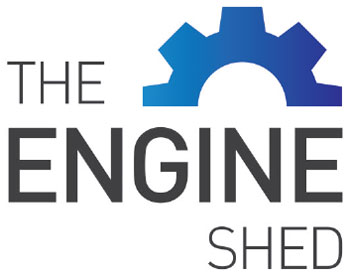
Q: For publishers wanting to increase their e-commerce revenues, what should they be looking to sell?
A:
There’s such an enormous breadth of options! Starting with the obvious, your publications and associated materials should be front and centre – those back issues can be a gold-mine, and the cost to fulfil them digitally is minimal. The recent evolution in text-to-speech capabilities means the automatic creation of audio content – whether podcasts or audiobooks – is now viable! For those operating in relevant consumer niches, don’t forget that autographed paraphernalia and one-off collectibles such as sports shirts, footballs and so on are also an option. Branded merchandise remains a stalwart, and if you’re unsure about the potential demand, much can be automatically fulfilled on-demand by third parties on a print-to-order basis, so you’ve got the opportunity to experiment. Gift-focused material can be popular for lifestyle publications.Now that the covid era is (hopefully!) history, face-to-face encounters are now back in vogue – experiences make ideal gifts, especially for the older population, whilst those in the B2B market space are finding clients hungry for in-person conference events. Also relevant to the B2B space is the option of generating vertical segment-specific analyst-style reports: depending on the source data, there’s scope for authoring these automatically now, which is pretty exciting.
Q: How can an optimised UX help boost e-commerce revenues?
A:
I’ve listed a wide range of products that are suitable for e-commerce, but your audience may well not be aware that such offerings are even available. Cross-selling, up-selling, recommendations and reviews presented algorithmically on-site can help raise that awareness. Once you have a sale, you can hopefully win that all important opt-in, and also follow up with newsletters and promotions. Pacing these correctly, adding real value, perhaps in the form of unique, personalised content, and keeping them ultra-relevant are key to success.For publishers, it’s vital that the actual checkout process itself is customised to the needs of the customer group: put the time in to ensuring a friction-free checkout that allows for the creation of subscription sales (via direct debit), the ability to handle payment for gifts (with the option to include gift cards, deliver to an alternative address and send an email reminder to the donor when renewal comes around again), and of course apply discount codes and vouchers. These requirements and hybrid payment options aren’t necessarily easy to implement, but are totally worth the investment in terms of recouping abandoned baskets and encouraging impulse buys.
Q: How can a focus on ‘membership’ help increase e-commerce revenues?
A:
Membership options provide a brilliant opportunity to engage with your audience and reinforce awareness of your products in the customer’s consciousness. Loyalty programmes, with affiliates perhaps – we even have clients who gift subscribers Avios points – are always popular.At a technical level, supporting single sign-on across your media estate can help maximise engagement and minimise the support load – if you have an app, the same credentials should work when it comes to logging on to renew a subscription, or to view web-based premium content. For those willing to take the long view, preferential pricing for members across all product lines can help increase sales volume at the expense of margin. Remember that once you have a user browsing your sites who is logged in, if you apply the appropriate analytics, you can learn a lot about their preferences and interests, and feed that back into making your promotional activities relevant. This kind of technology used to be the domain of the Big Boys, but, as technology marches on, is increasingly accessible to all.
Q: What are the customer support implications of increased e-commerce activity?
A:
When dealing with consumers, expectations are high and there are distance selling compliance issues to think about. As soon as you are shipping physical goods, you’re going to need to have the processes in place for dealing with returns (under the distance selling act). As a vendor, it’s also your responsibility to ensure the items ordered and paid for are delivered to the buyer – so you’ll need to have processes in place to handle the odd mis-delivery, and tracking for higher value shipments, which in turn implies integration with the courier’s systems. Chargebacks are another fact of life, especially in the consumer marketplace, as are direct debit ‘bounces’ and cancellations.The list might sound intimidating, but automated back office systems can help here – with the bonus that automation also brings with it a consistency in terms of the way in which enquiries are handled and dealt with, leaving a positive customer impression even when something has gone wrong.
Dealing with B2B clients is simpler in many respects, but the stakes are higher, and for those high value clients, personal engagement with an account-manager can help. Ideally, the account-manager is a nominated individual in these situations, but inevitably cases will arise where enquiries need to be dealt with urgently by another staff member: in this event, having the full context of historical interactions available via a CRM is a must.
Q: In terms of e-commerce fulfilment, what do publishers need to consider?
A:
Fulfilment of physical goods equates to warehousing, storage and dispatch. These activities can be outsourced if the volume justifies it, in which case, systems integration with the facilitator is a must. For those who prefer to keep these activities in-house, barcode technology is cost-effective and available to all. Automating the order picking process, and streamlining of stock management with, for example, automatic re-ordering when thresholds are crossed, is straightforward. Inventory management should be linked to your e-commerce store of course to ensure clients are aware if an item is on back-order or otherwise unavailable.I mentioned drop-shipping style scenarios earlier, where goods are made and / or delivered on demand – and again, the recurring theme of integration and process automation comes up. The time invested in putting those into place at the outset is well spent; trying to manage orders on an ad hoc basis using email and spreadsheets is the route to disappointed customers and chaos!
Q: What scope is there for increased automation in publishers’ e-commerce activities?
A:
The key to customer satisfaction is efficient, effective communication and consistent execution. If and when there’s a hiccup in execution, fast, clear and honest communication can save the day. Driving common customer interactions through pre-determined automated, or semi-automated, workflows ensures every customer engagement is handled to the same standard, and nothing should fall through the cracks. Choose your suppliers and fulfilment partners carefully, and ensure they have the integration capabilities you need. Don’t take this at face value either, have an expert check – as some put an optimistic, shall we say, outlook on their abilities!Q: What’s in the pipeline from The Engine Shed?
A:
We’re building on the cornerstones of process automation, workflow automation and integration. We’re especially excited about the evolution of customer communications and making those super relevant and interesting to the recipient. The increasing commoditisation of the integration space is exciting too – it gives us the opportunity to stand on the shoulders of giants and plumb together awesome, sophisticated services. It’s a cliché, but the pace of technological evolution is gathering speed at a rate I’ve not seen before – we’re excited about the possibilities, and as they say, ‘you haven’t seen anything yet’.
About us
The Engine Shed provides comprehensive CRM and business management software specifically designed to meet the needs of publishers. As the first software-as-a-service provider in this industry in the UK, we understand the challenges of delivering remote-working capable systems. We know that no two publishers are the same.
At the heart of our systems is a single customer view that covers advertisers, digital and print members, subscribers, shoppers, layout, invoicing and e-commerce. Financial transactions are streamlined through the use of online payments and automated direct debit processing.
Our reporting capabilities offer management dashboards summarising key indicators by business area. Comprehensive APIs allow for integration with pre-existing systems.
We take care of membership, subscriptions ad sales, campaign management, production workflow, flatplanning, e-commerce, invoicing, 3rd party integrations and more.
Tel: 020 7183 0200
Email: patrick@theengineshed.com










